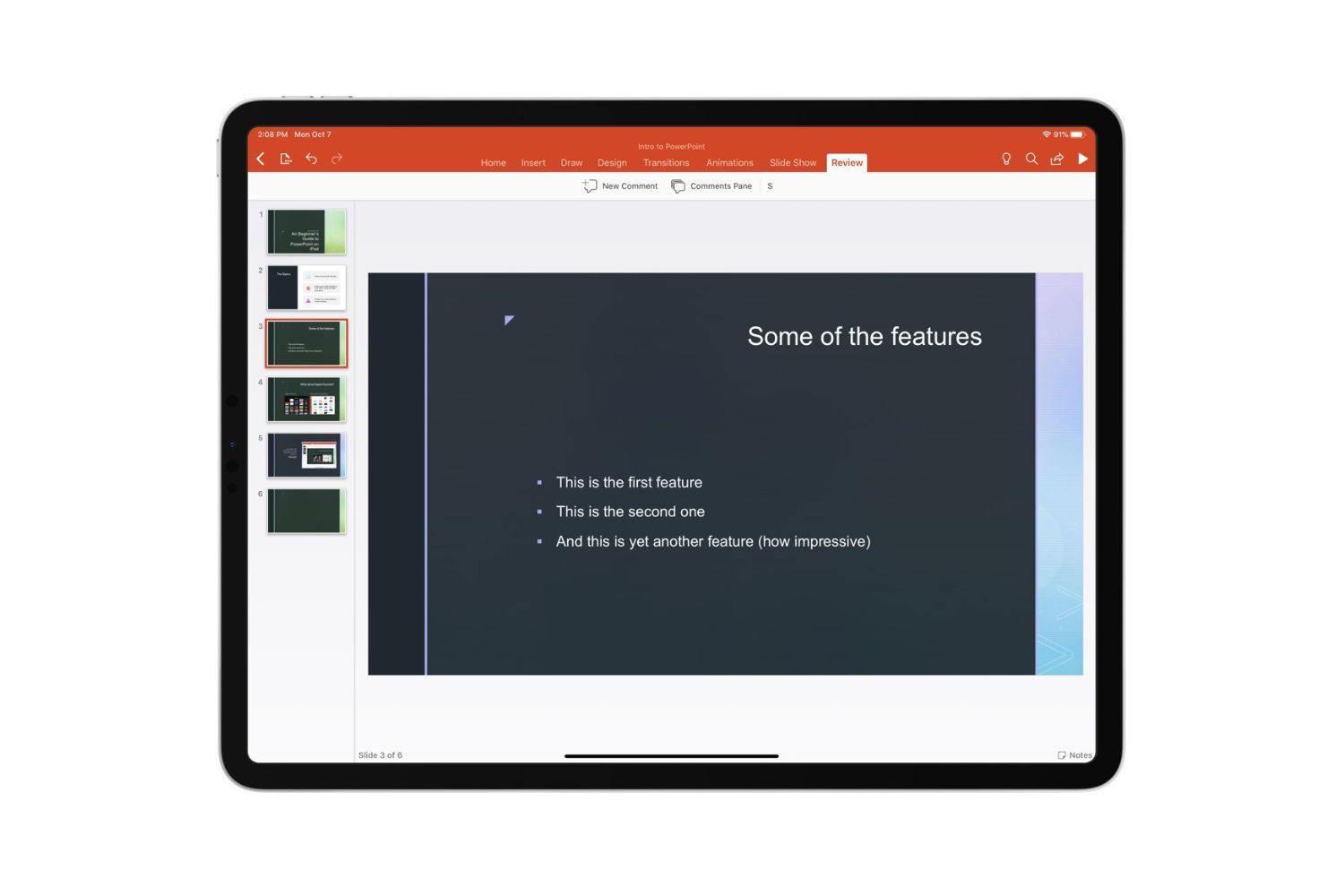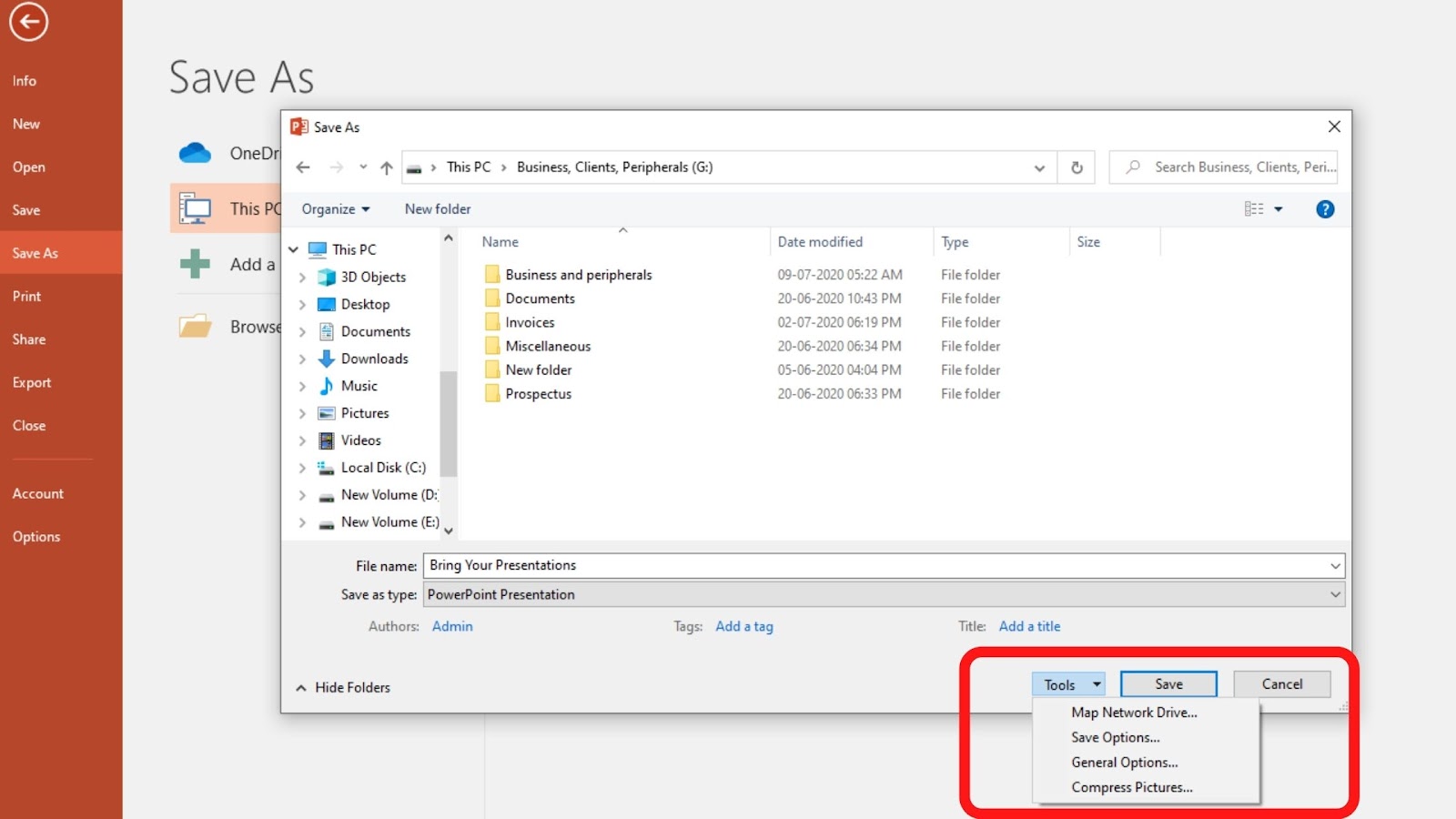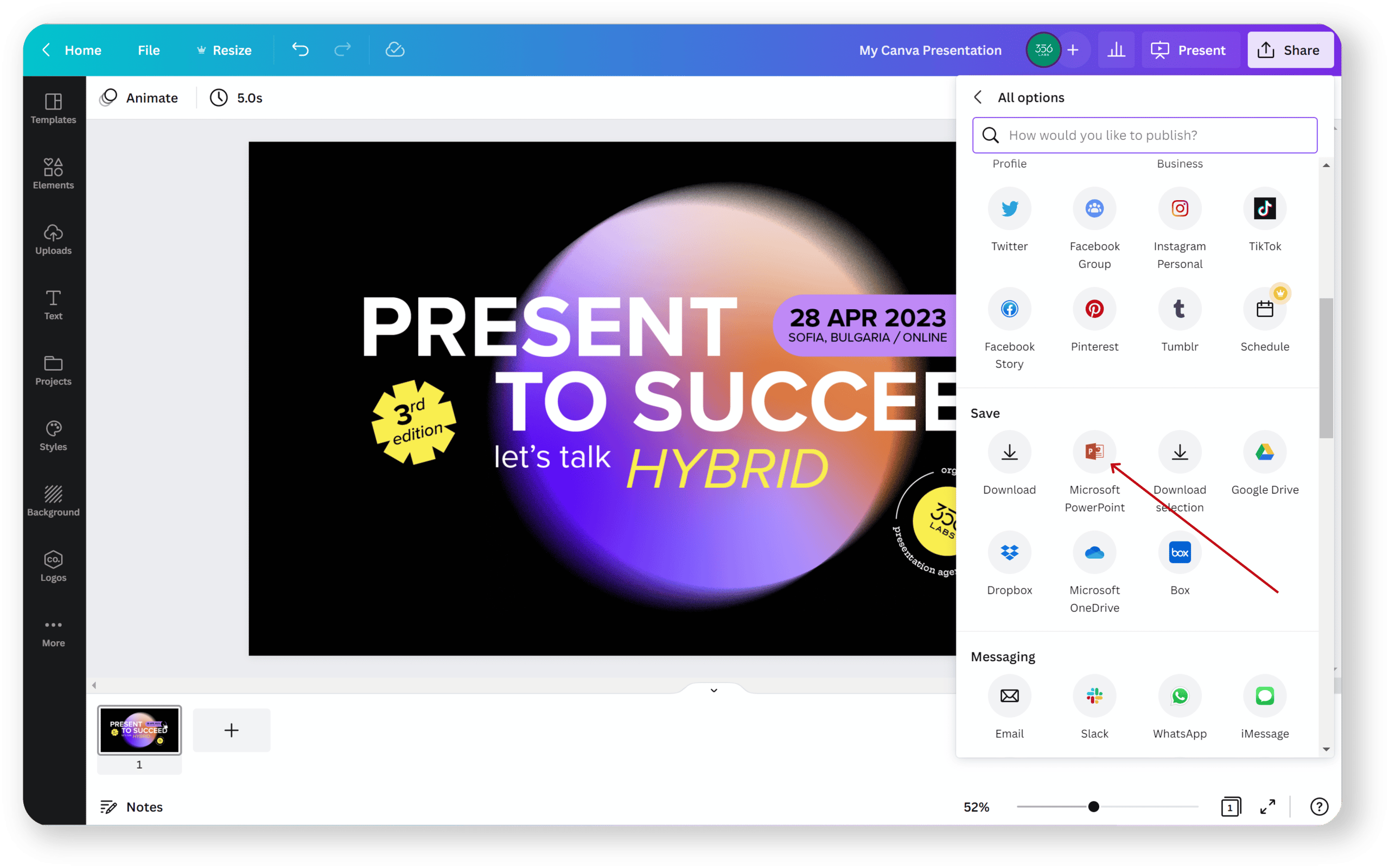Introduction
In today’s fast-paced world, visual presentations have become an integral part of communication and storytelling. PowerPoint, with its rich set of features, is one of the most popular tools used for creating engaging presentations. One important element that can enhance the accessibility and comprehension of your PowerPoint presentations is the addition of subtitles. Subtitles provide a textual representation of the spoken content, making it easier for viewers to follow along, especially for those with hearing impairments or language barriers.
Adding subtitles to your PowerPoint presentations not only improves accessibility but also increases the overall effectiveness of your message. It allows for a wider audience reach, ensuring that your content can be understood and appreciated by diverse viewers from different cultural and linguistic backgrounds. Whether you are giving a business presentation, an educational lecture, or a product demonstration, incorporating subtitles can make your presentation more inclusive and impactful.
In this article, we will explore the various methods and techniques to add subtitles in PowerPoint. We will discuss how you can create subtitles directly within PowerPoint, as well as how to import and format subtitle files. Additionally, we will examine the importance of timing and synchronization for seamless integration of subtitles with your presentation.
By the end of this article, you will have a comprehensive understanding of how to add subtitles in PowerPoint and be equipped with the tools to create engaging and accessible presentations.
Why Add Subtitles in PowerPoint?
Adding subtitles to your PowerPoint presentations offers several benefits that can enhance the effectiveness and accessibility of your content.
Improved Accessibility: Subtitles provide a text-based representation of the spoken content, making it easier for individuals with hearing impairments to understand and follow along with your presentation. By including subtitles, you are ensuring that your message reaches a wider audience, including those who may otherwise struggle to comprehend the audio-only content.
Inclusive Communication: Subtitles also promote inclusivity by accommodating viewers with language barriers or those who speak English as a second language. Not everyone may be fluent in the language of your presentation, but subtitles allow them to read and understand the content, ensuring that your message transcends language limitations and resonates with diverse audiences.
Enhanced Comprehension: Even for individuals without hearing impairments or language barriers, subtitles can significantly improve comprehension and retention of information. Auditory learners, in particular, may find it easier to grasp and absorb the content when they have the option to read subtitles while listening to the presenter.
Attention Retention: Subtitles can help maintain viewer engagement by reinforcing key points and providing visual cues. When viewers can read the spoken words alongside the visuals, they are more likely to stay focused and connected to the presentation, reducing the chances of distractions or information overload.
Improved Knowledge Transfer: Subtitles allow viewers to quickly refer back to specific sections of the presentation, making it easier for them to review and understand complex concepts. This is particularly beneficial for educational presentations or training sessions, where viewers may need to revisit specific information or revise important details.
Global Reach: In an increasingly interconnected world, where presentations often reach audiences across different countries and cultures, subtitles offer a solution for bridging language gaps. By adding subtitles, you can ensure that your message is accessible and well-received by audience members from diverse linguistic backgrounds.
Considering these advantages, it becomes clear that adding subtitles in PowerPoint is a powerful method to improve accessibility, enhance comprehension, and create an inclusive and impactful presentation. In the next sections, we will explore the various methods you can use to add subtitles to your PowerPoint presentations.
Creating Subtitles within PowerPoint
PowerPoint provides built-in tools that allow you to create subtitles directly within the application, eliminating the need for external software or files. Follow these steps to create subtitles within PowerPoint:
Step 1: Open your PowerPoint presentation: Launch PowerPoint and open the presentation you wish to add subtitles to. Ensure that you have the latest version of PowerPoint, as some older versions may have limited subtitle creation capabilities.
Step 2: Open the Slide Show tab: Click on the “Slide Show” tab in the ribbon at the top of the screen. This tab contains the commands related to presenting and viewing the slides.
Step 3: Enable subtitles: In the Slide Show tab, locate the “Subtitle Settings” option and click on it. This will open a new window where you can enable subtitles for your presentation.
Step 4: Customize the subtitle settings: In the subtitle settings window, you can adjust various parameters, such as the font style, font size, and subtitle position on the screen. Take some time to customize these settings according to your preferences and the requirements of your presentation.
Step 5: Start presenting with subtitles: Once you have customized the subtitle settings, click on the “Start Subtitles” button to begin presenting with subtitles. PowerPoint will automatically transcribe your spoken words and display them as subtitles on the screen in real-time.
Step 6: Control the subtitles: During the presentation, you can control the appearance and behavior of the subtitles using the commands in the subtitle settings window. You can hide or show the subtitles, adjust their position, or even pause and resume subtitle display as needed.
Creating subtitles within PowerPoint offers a convenient solution for adding real-time captions to your presentations. However, it’s important to note that this feature might not provide perfect accuracy, especially if you have a heavy accent, speak quickly, or use technical jargon. In such cases, it might be advisable to consider alternative methods, such as importing professionally transcribed or translated subtitle files.
In the next section, we will explore how to add and import subtitle files into PowerPoint for more precise and customized subtitle content.
Adding and Importing Subtitle Files
While creating subtitles within PowerPoint is a convenient option, it may not always provide the level of accuracy or customization you require. In such cases, you can add and import subtitle files into your PowerPoint presentation. Here’s how:
Step 1: Prepare your subtitle file: Start by preparing your subtitle file in the appropriate format. Common subtitle file formats include .SRT, .SUB, .SBV, and .ASS. You can create subtitle files using dedicated subtitle editing software or by outsourcing the task to professional transcription services.
Step 2: Open your PowerPoint presentation: Launch PowerPoint and open the presentation you want to add subtitle files to. Ensure that you have the latest version of PowerPoint to take advantage of the most up-to-date subtitle import features.
Step 3: Go to the Home tab: Click on the “Home” tab in the PowerPoint ribbon at the top of the screen. This tab contains the commands related to formatting and editing the content of your slides.
Step 4: Click on the “Subtitle” button: In the Home tab, locate the “Subtitle” button within the “Slides” group. Clicking on this button will display a drop-down menu with various subtitle options.
Step 5: Choose your subtitle file: From the subtitle options menu, select the “Subtitle from File” option. This will open a file explorer window where you can navigate to and select your subtitle file.
Step 6: Format and customize the subtitles: Once you have added the subtitle file, PowerPoint will import and display the subtitles on the corresponding slides. You can further format and customize the subtitles by adjusting the font, size, color, and position of the text using the formatting options available in PowerPoint.
Step 7: Preview and adjust the synchronization: After importing the subtitle file, preview your presentation to ensure that the subtitles are synchronized correctly with the spoken content. If necessary, you can adjust the timing and synchronization of the subtitles by manually editing the subtitle file or using PowerPoint’s audio-syncing features.
By adding and importing subtitle files, you can ensure more accurate and precise subtitles for your PowerPoint presentations. This method is particularly useful when working with professional transcription services or dealing with multilingual presentations that require translated subtitles.
In the next section, we will explore the importance of formatting subtitles in PowerPoint and techniques for making them visually appealing and easy to read.
Formatting Subtitles in PowerPoint
Formatting subtitles in PowerPoint is essential to ensure that they are visually appealing, easy to read, and seamlessly integrated into your presentation. By following these formatting guidelines, you can enhance the overall impact and comprehension of your subtitles:
Choose a suitable font and size: Select a font that is clear and easily readable, even from a distance. Stick to standard fonts like Arial, Calibri, or Times New Roman. Adjust the font size to ensure that the subtitles are legible without being too distracting or taking up too much space on the slide.
Use appropriate color contrast: Maintain a good color contrast between the subtitles and the background to ensure readability. Avoid using color combinations that may strain the viewers’ eyes or make the subtitles difficult to distinguish. For example, use dark subtitles on light backgrounds or vice versa.
Position the subtitles strategically: Place the subtitles in a location that does not obstruct the main content of the slide, such as the speaker’s face or important visuals. Generally, positioning the subtitles at the bottom of the slide or in the margins is a common practice, ensuring they are easily visible without interfering with the main content.
Format for emphasis and clarity: Use formatting features like bold or italic text to emphasize important words or phrases in the subtitles. This can help guide the viewer’s attention and highlight key information. However, use these formatting options sparingly to avoid overwhelming the audience with excessive emphasis.
Consider the duration of subtitle display: Adjust the timing of the subtitle display to ensure that each subtitle remains on the screen long enough for viewers to read and comprehend it. The duration should be properly synchronized with the spoken content to prevent confusion or disruption in understanding.
Utilize animations or transitions: Employ slide transitions or animations to smoothly introduce and remove subtitles. This can create a seamless and engaging viewing experience, ensuring that the subtitles appear and disappear in a way that complements the overall flow of the presentation.
Preview and iterate: Always preview your presentation with subtitles enabled to assess the readability and effectiveness of the formatting. Make any necessary adjustments to font size, positioning, or color contrast based on the preview to optimize the viewing experience for your audience.
By adhering to these formatting guidelines, you can create subtitles in PowerPoint that are visually appealing, easy to read, and seamlessly integrated into your presentation. Remember that the key is to strike a balance between making the subtitles stand out and ensuring they do not distract from the main content. With well-formatted subtitles, your PowerPoint presentation will become more accessible and engaging for all viewers.
In the next section, we will discuss the importance of timing and synchronization when it comes to displaying subtitles in PowerPoint.
Timing and Synchronization of Subtitles
The timing and synchronization of subtitles play a crucial role in ensuring that the text aligns seamlessly with the spoken content in your PowerPoint presentation. Proper timing ensures that viewers can read the subtitles without feeling rushed or experiencing a time lag. Here are some important considerations for timing and synchronizing your subtitles:
Match subtitle duration to spoken words: Each subtitle should align with the corresponding spoken words on the slide. Adjust the duration of each subtitle so that it appears on the screen long enough for viewers to comfortably read and comprehend it. Strive for a balanced rhythm that allows viewers to follow along without feeling overwhelmed or left behind.
Consider the pace of the presentation: Take into account the overall pace and speed of your presentation when timing the display of subtitles. If you tend to speak quickly, you may need to shorten the duration of each subtitle to keep up with the flow. Conversely, if you speak at a slower pace, you may need to extend the duration to avoid overlapping or skipping subtitles.
Pause for emphasis and clarity: Use appropriate pauses in your speech to allow viewers to absorb the content of each subtitle before moving on to the next. This can also serve as a visual cue for viewers to process the information and align it with the visuals on the slide.
Adjust for different languages and translations: When working with translated or multilingual subtitles, it’s important to consider that different languages may have varying sentence lengths and structures. Take these differences into account when timing and synchronizing subtitles to ensure that the text appears on the screen at the appropriate time for each language.
Test and refine: Always preview your presentation with subtitles enabled to evaluate the timing and synchronization. Pay attention to how the subtitles align with the spoken content, making any necessary adjustments to the duration or placement of subtitles to ensure a seamless viewing experience.
Proper timing and synchronization of subtitles not only aid in comprehension but also contribute to the overall flow and engagement of your presentation. When done correctly, subtitles that are perfectly timed and synchronized enhance the viewer’s experience, allowing them to effortlessly follow along and engage with the content.
In the next section, we will conclude our discussion on adding subtitles in PowerPoint and summarize the key points covered in this article.
Conclusion
Adding subtitles to your PowerPoint presentations is a powerful way to enhance accessibility, improve comprehension, and create an inclusive and engaging experience for your audience. Whether you create subtitles within PowerPoint or import subtitle files, it is important to format and synchronize them effectively. This ensures that the subtitles are visually appealing, easy to read, and perfectly aligned with the spoken content.
Subtitles enable individuals with hearing impairments to follow along, help overcome language barriers, and promote inclusive communication. They also enhance attention retention, knowledge transfer, and facilitate global reach by making your presentations accessible to a wider audience. By incorporating subtitles, you ensure that everyone can understand and benefit from the valuable information you are sharing.
When creating subtitles within PowerPoint, remember to customize the settings, control the display, and adjust formatting options to suit your presentation needs. Importing subtitle files provides a higher level of accuracy and customization, particularly when dealing with professional transcription or translation services.
Timing and synchronization are vital aspects of subtitle management. Properly timing the duration of subtitles, considering the pace of your presentation, and pausing for clarity all contribute to a seamless and cohesive viewing experience. Testing and refining the timing and synchronization of subtitles are essential to ensure optimal comprehension and audience engagement.
Incorporating subtitles in PowerPoint is not only a responsible decision to improve accessibility but also an effective means to engage and connect with a diverse range of viewers. By including subtitles, you create an inclusive environment where everyone can fully participate and benefit from the information you present.
We hope that this article has provided you with valuable insights and practical tips on how to add subtitles in PowerPoint. By utilizing the methods and techniques discussed, you can create impactful, accessible presentations and effectively communicate your message to a broader audience.

























